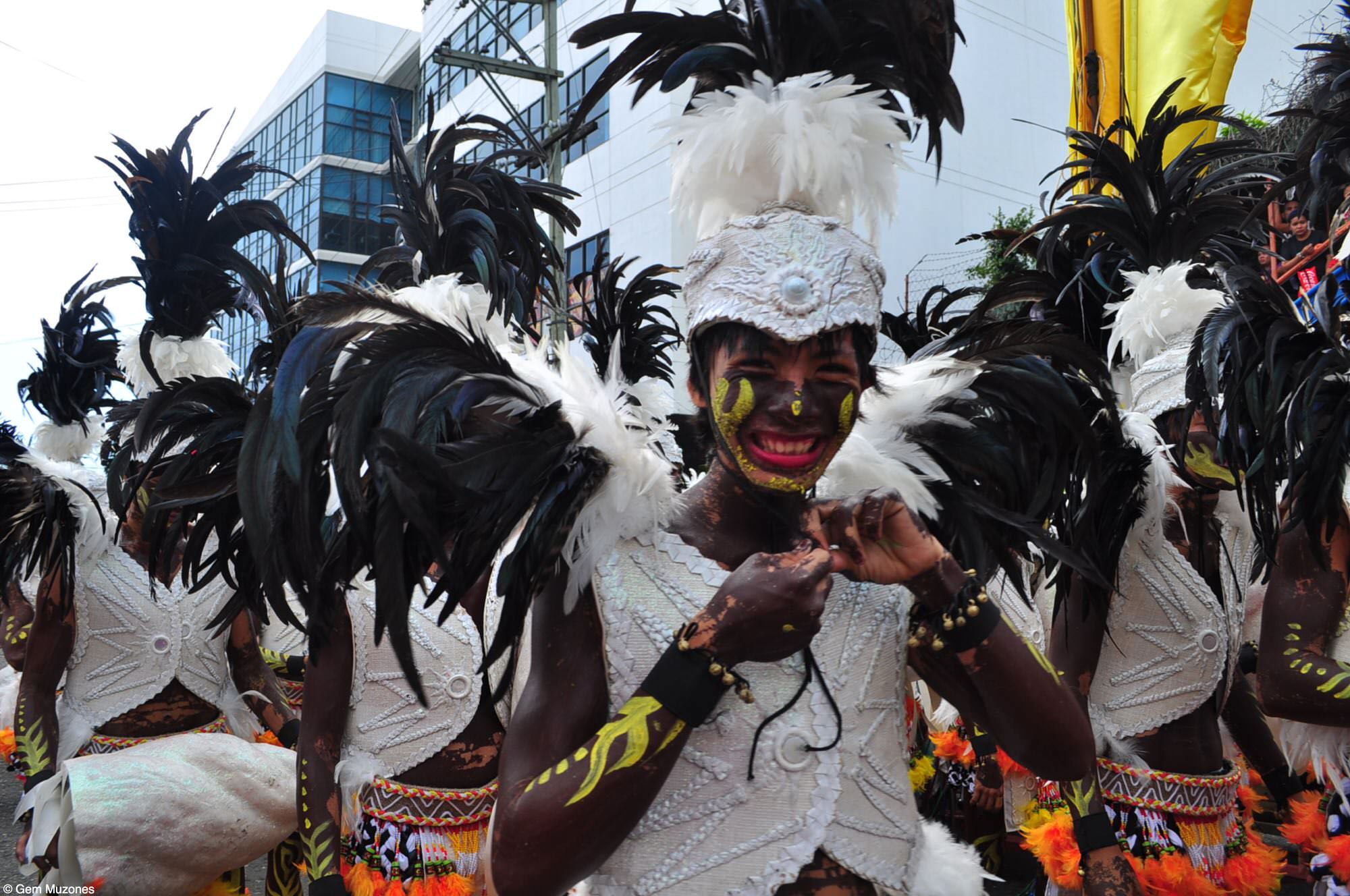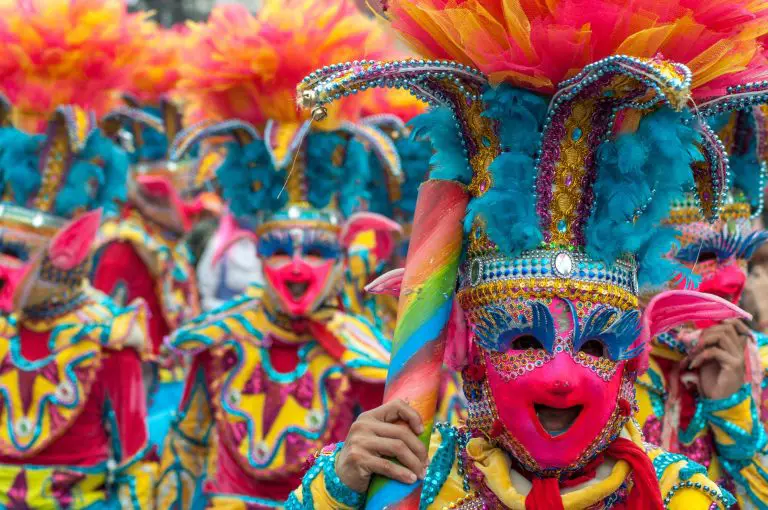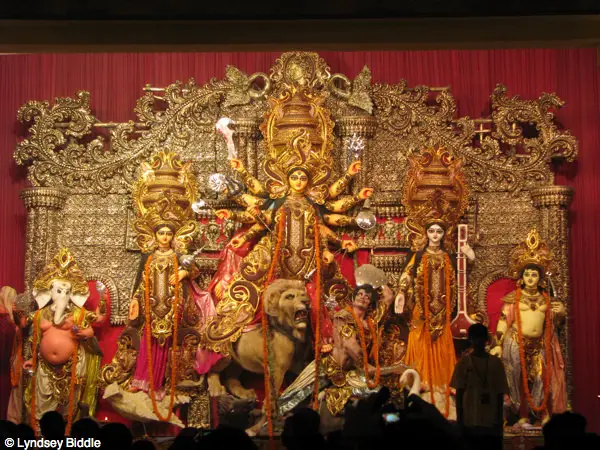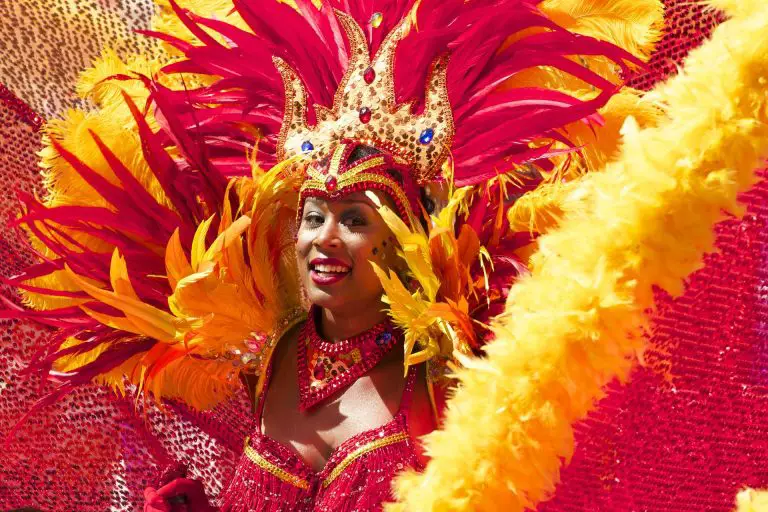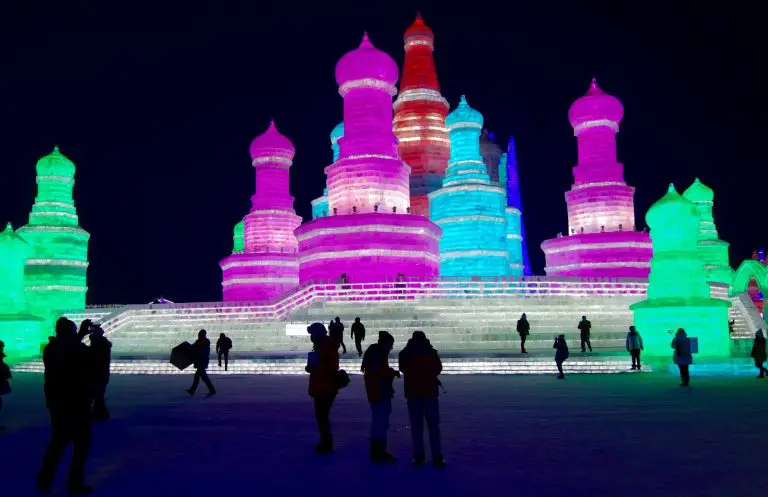How to enjoy the Dinagyang festival in Iloilo, Philippines

A couple of years ago, my grandfather from Iloilo passed away and his relatives made their way to our province to bid him goodbye, including my immediate family. With my grandfather’s passing, my grandmother, his wife of over 50 years, was too devastated to step out of the house. Fortunately, the province was also celebrating its annual Dinagyang Festival around that time and my cousins thought that it would be a good idea to convince her to come out of the house, interact with people, and smile again. We thought that having her step outside more would be great for her health and improve her mood (well, it is proven by science) especially given that she’s already in her eighties.
Once we forced out a “yes” from her, we hired a van and planned our weekend escape to the city to experience the colors and sounds of Dinagyang Festival. It was also a great time for me to get to know my hometown, its people, and their culture.
What is the Dinagyang Festival?
Dinagyang Festival, a religious and cultural event, is one of the most popular and most anticipated festivals in the Philippines; it is usually held on the fourth Sunday of January. It celebrates the arrival of the first settlers in the region and honors Santo Nino.
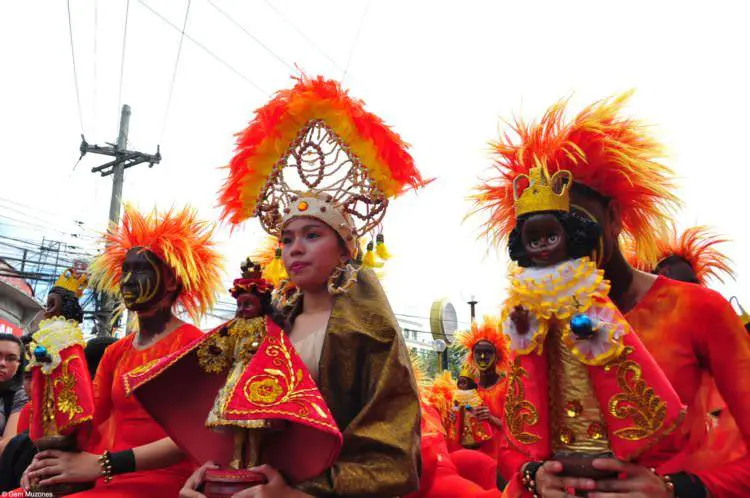
How to get there:
If you’re not from Iloilo, the easiest way to get there is to travel by plane. I highly suggest you book your flights in advance because air fares tend to spike whenever there’s a festival.
It only takes an hour and 15 mins to get to Iloilo from Manila, but there are also regular flights directly to Iloilo if you’re coming from Hong Kong or Singapore.
Iloilo airport taxi fares start at P500, or for a cheaper option, take the shuttle vans just across the parking lot. A ride to SM Mandurriao, the shuttle’s last stop, will only cost you P50. As soon as you reach SM Mandurriao, hop in a metered taxi to take you to your final destination.
If you prefer travelling by land, take the Roll-Off-Roll-On (RORO) Bus from Cubao to Iloilo, travel time is 18 hours and the fare is around P1000.
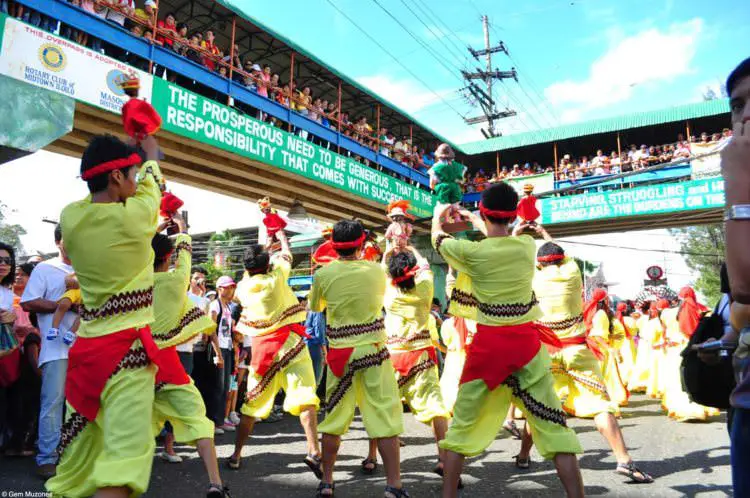
Where to stay:
I recommend you reserve your accommodation in advance, as most hotels are likely to get fully booked over the Dinagyang Festival weekend. If you want to see festival events from your hotel room window, these hotels are located along the parade route:
- City Corporate Inn
- Harbor Town Hotel
- Amigo Terrace Hotel
- Iloilo Midtown Hotel
- Days Hotel
- Grand Tower Suites
- Century21 Hotel
- Ong Bun Pension House
- One Loudres Dormitel
- People’s Hotel
- EON Plaza Centennial Hotel
- Fine Rock Hotel
- Iloilo Grand Hotel
- Circle Inn Iloilo
You can also opt to stay in downtown hotels such as Hotel del Rio, Sarabia Manor Hotel, Highway21, Villa Sagrado, Riverside Inn, and Arthur Suites.
Festival activities:
The highlights of the festival are scheduled over three days, usually over the fourth Sunday in January, but activities happen all throughout the month.
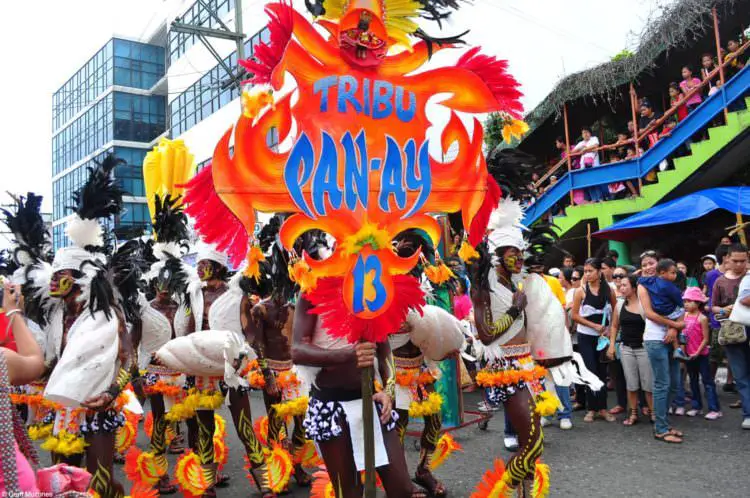
Day one of the Dinagyang Festival: fluvial procession
The first day of the three-day festival highlight period starts on a Friday, with a religious fluvial procession along the Iloilo river. People carry around Santo Nino images in pump boats. On this day, they reenact the story of the image of Santo Nino being brought to Iloilo City from Cebu by the Augustinian fathers. Once they reach the port, they unload the image and parade towards San Jose Parish Church.
Day two of the Dinagyang Festival: Kasadyahan cultural parade
On the second day, they celebrate a street parade called Kasadyahan where “tribes” from various towns in the province perform in judging areas. Kasadya is Hiligaynon for “happiness” so expect festivities to be all about merry-making on this day. Participants usually include a variety of people: students, the not-so-young, and some private groups. The participants can wear any costume that they want depending on their concept and are not limited to the use of drums.
Day three of the Dinagyang Festival: Dinagyang Ati competition
The last day of the festival is the most-anticipated, my cousins told me. And when I heard the loud music from the huge speakers in the city streets and people running towards the main stage – I realised they were right.
The program starts off with a mass at the San Jose Church, and in honor of the Santo Nino, several tribes perform on five staging areas. Performers walk over five kilometres in their bare feet and chant “Hala Bira!” while dancing along to their drums — all while wearing their heavy and fancy costumes for over ten hours!
We stood in line in one of the streets where the tribes passed by and danced with them. If you only have one day to join the festivities, choose to go on the third day.

Other must-visit places in Iloilo:
To make the most out of your Iloilo experience, explore the rest of the city. Iloilo is known for its historical churches and St. Clement’s Church is one of the must-see churches in the area. Photos of St. Clement’s exterior will brighten anybody’s Instagram feed!
Then check out the Gothic-Romanesque-inspired Molo Church. Take a walk around the Jaro district where rows of old houses are home to handmade fabric made from sinamay, jusi and pina. The Jaro Plaza is the center of activity in Jaro. Check out the Jaro Cathedral, where you’ll find the image of Nuestra Senora de Candelaria, the only rose among the statues of male saints.
And within just a short distance, you’ll find the perfect place to end the day: the Plazuela. It’s the perfect place to wind down, enjoy the view and hang out after a long tiring day on your Iloilo adventure.
Here’s a foodie fact: La Paz is actually the home of Iloilo’s finest La Paz Batchoy (well, you might have guessed from the name itself). In the La Paz Market, you’ll find Netongs, where great batchoy is made right in front of your very eyes. Definitely a must-try!
The end of the day
After the festivities, our family ate lunch at one of the inasal restaurants as we shared fun stories and laughter over grilled chicken. Going out together as a family to have fun after a relative’s passing might not have been the right choice for other families, but it was what exactly what we, especially my grandmother, needed at that time.
If the sounds and colors of Dinagyang Festival can’t cheer you up, I don’t know what will!

